Bust of Trajan
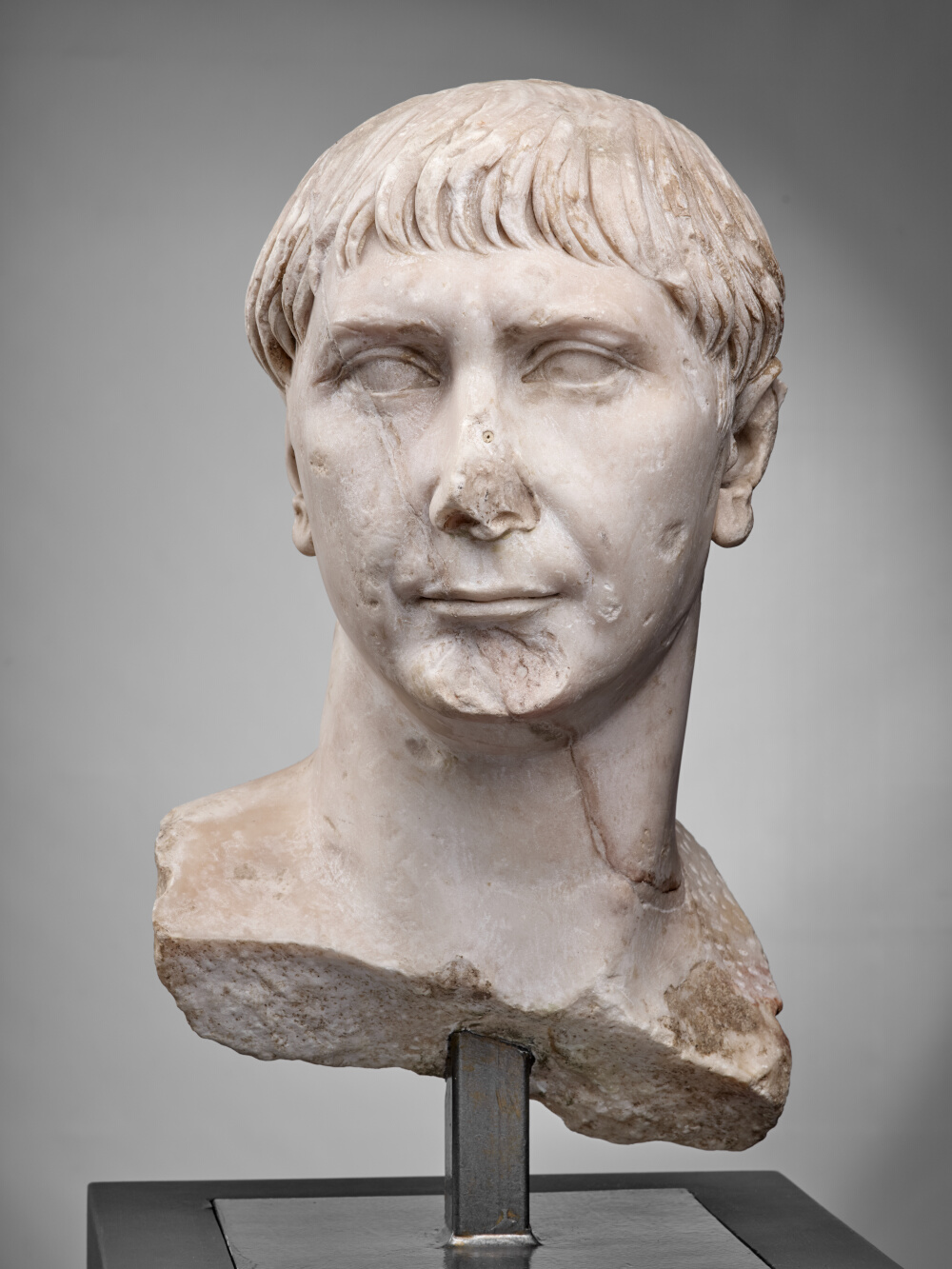
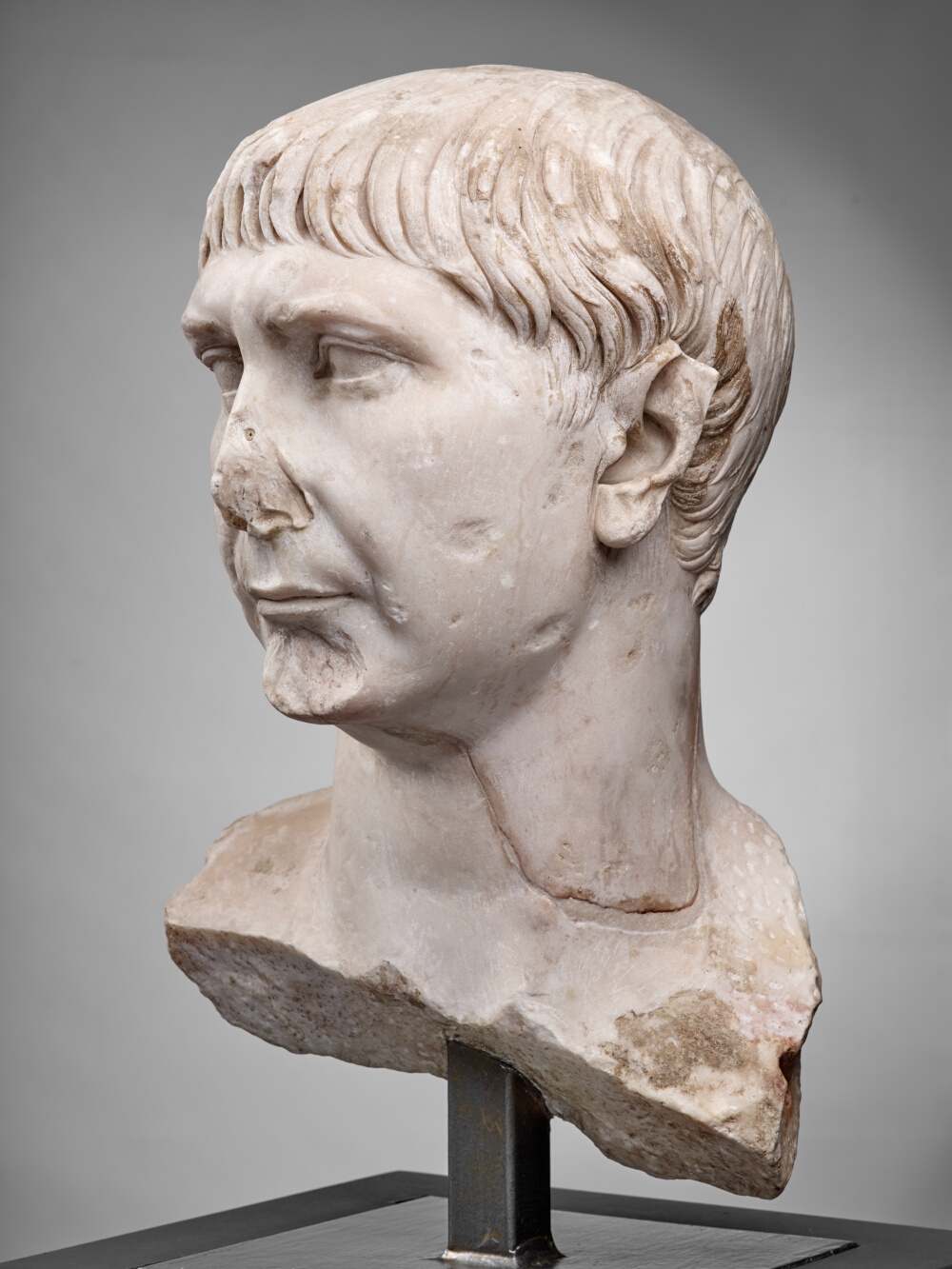
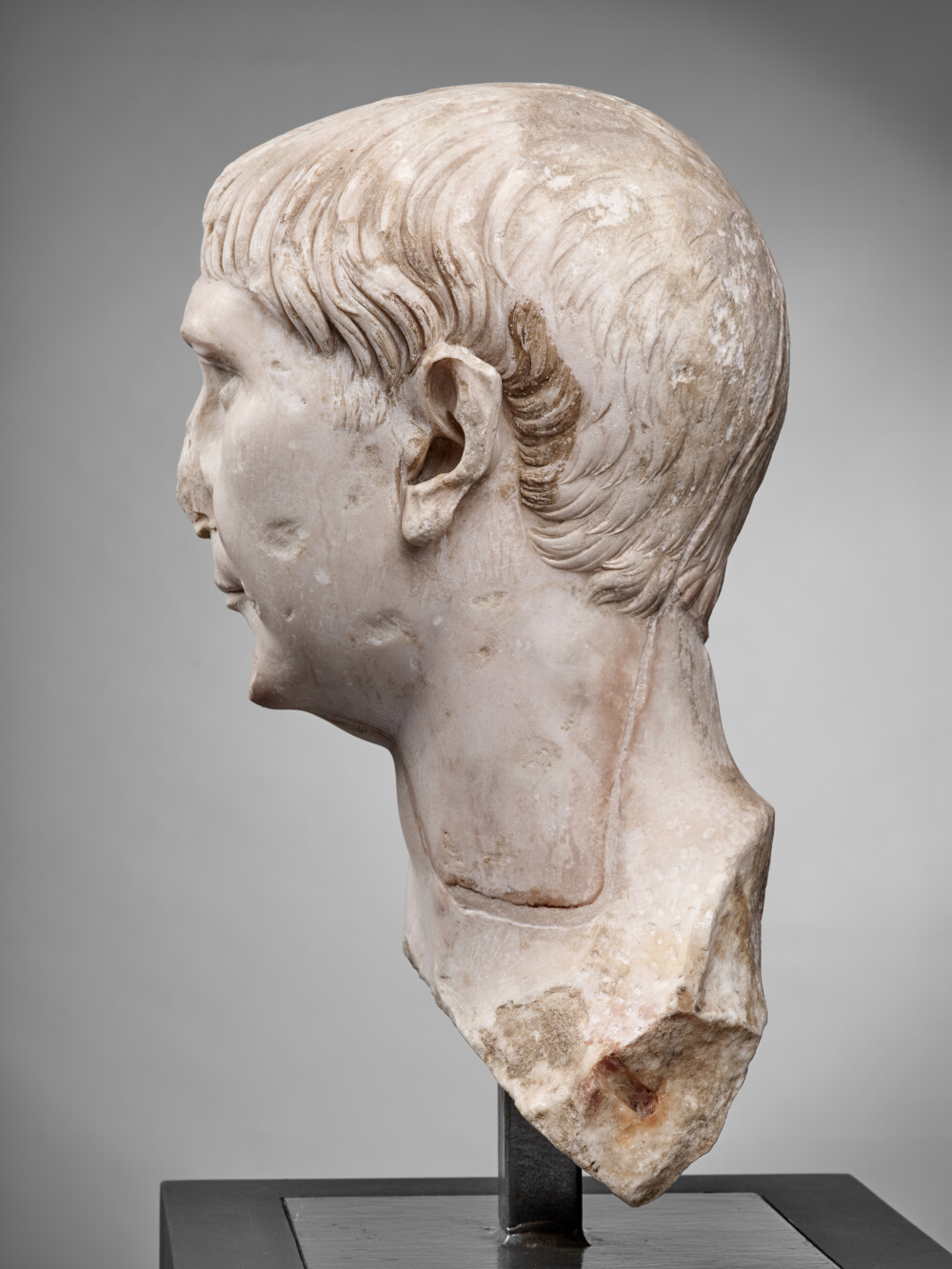
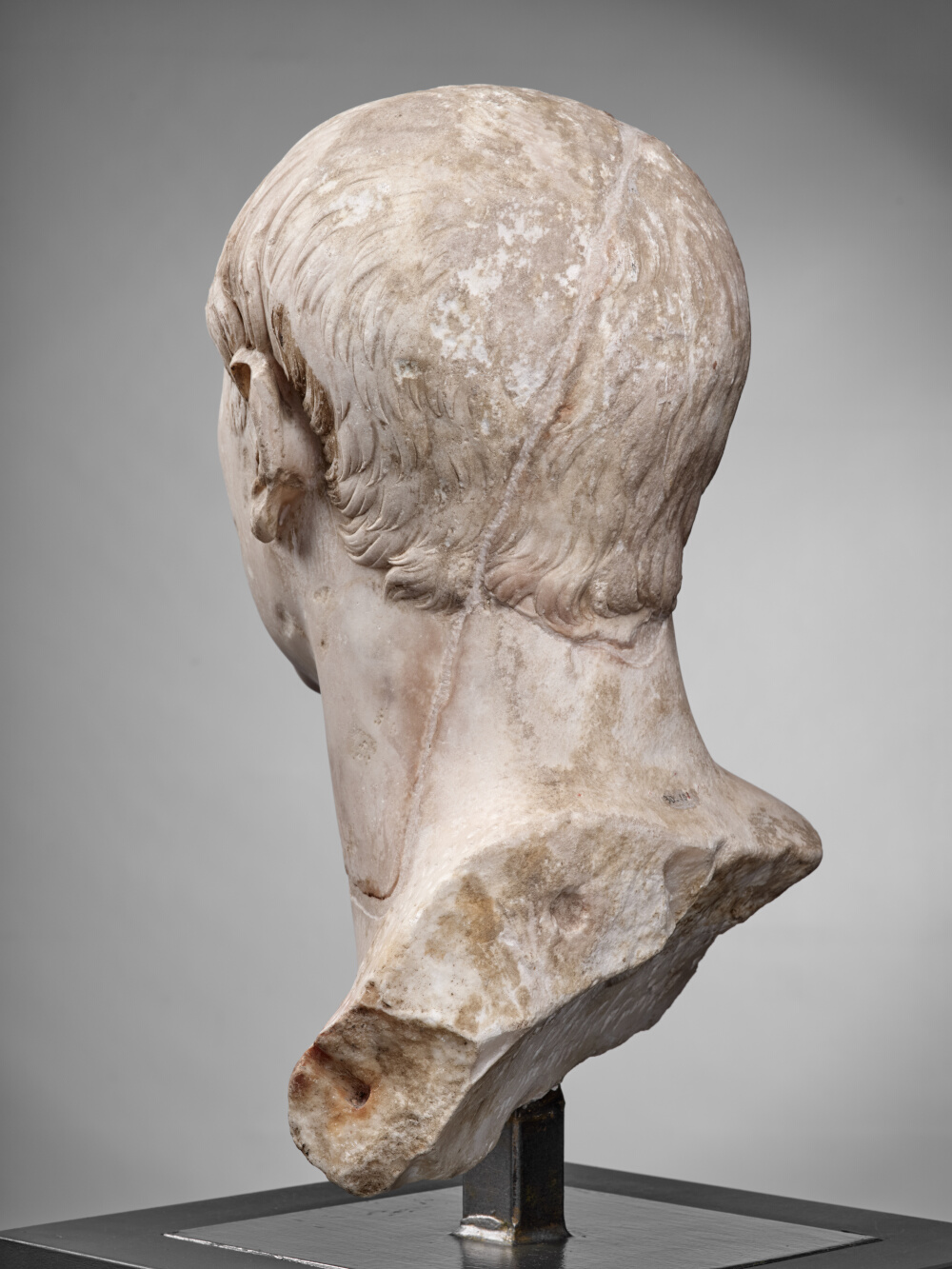
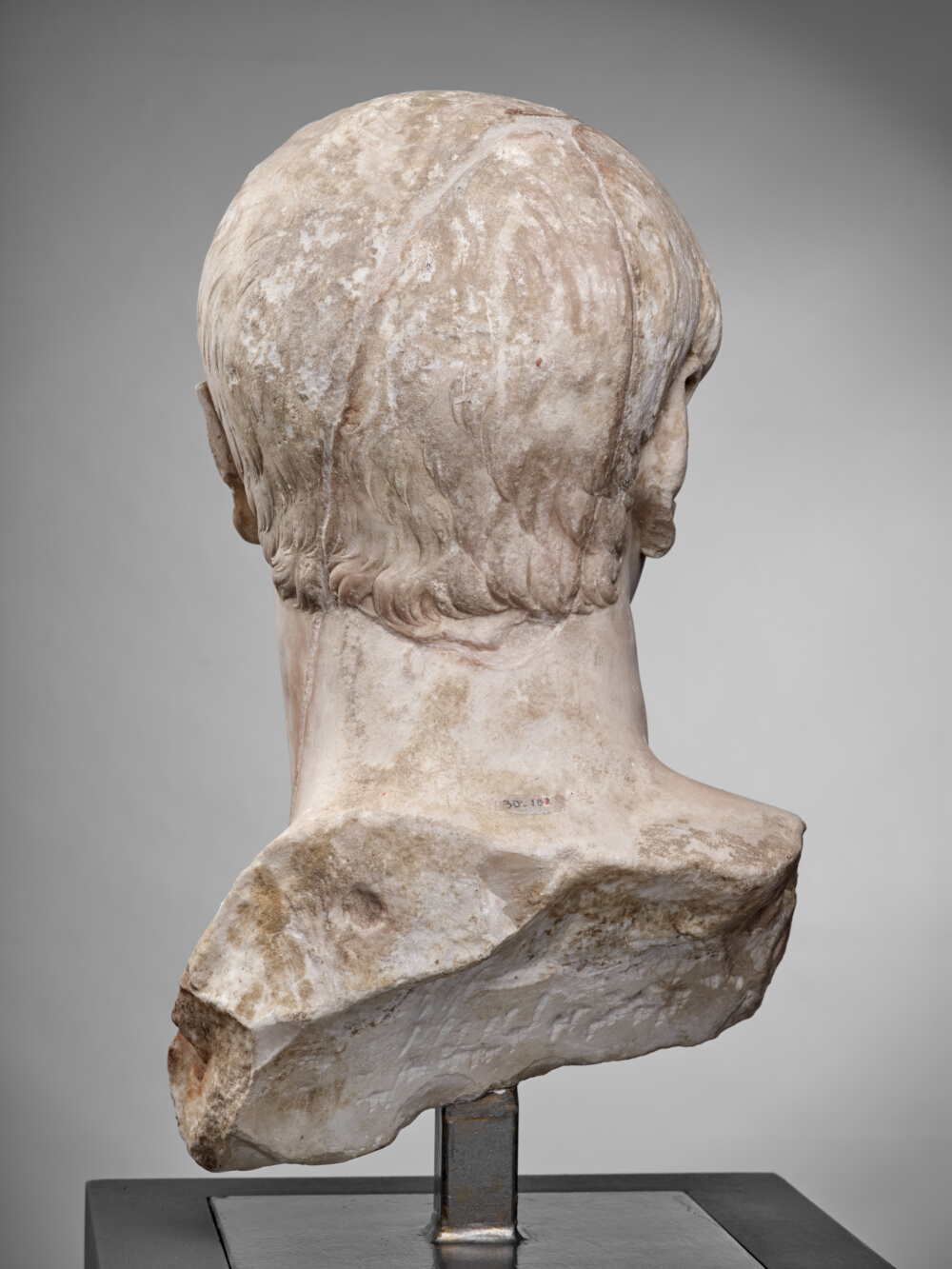

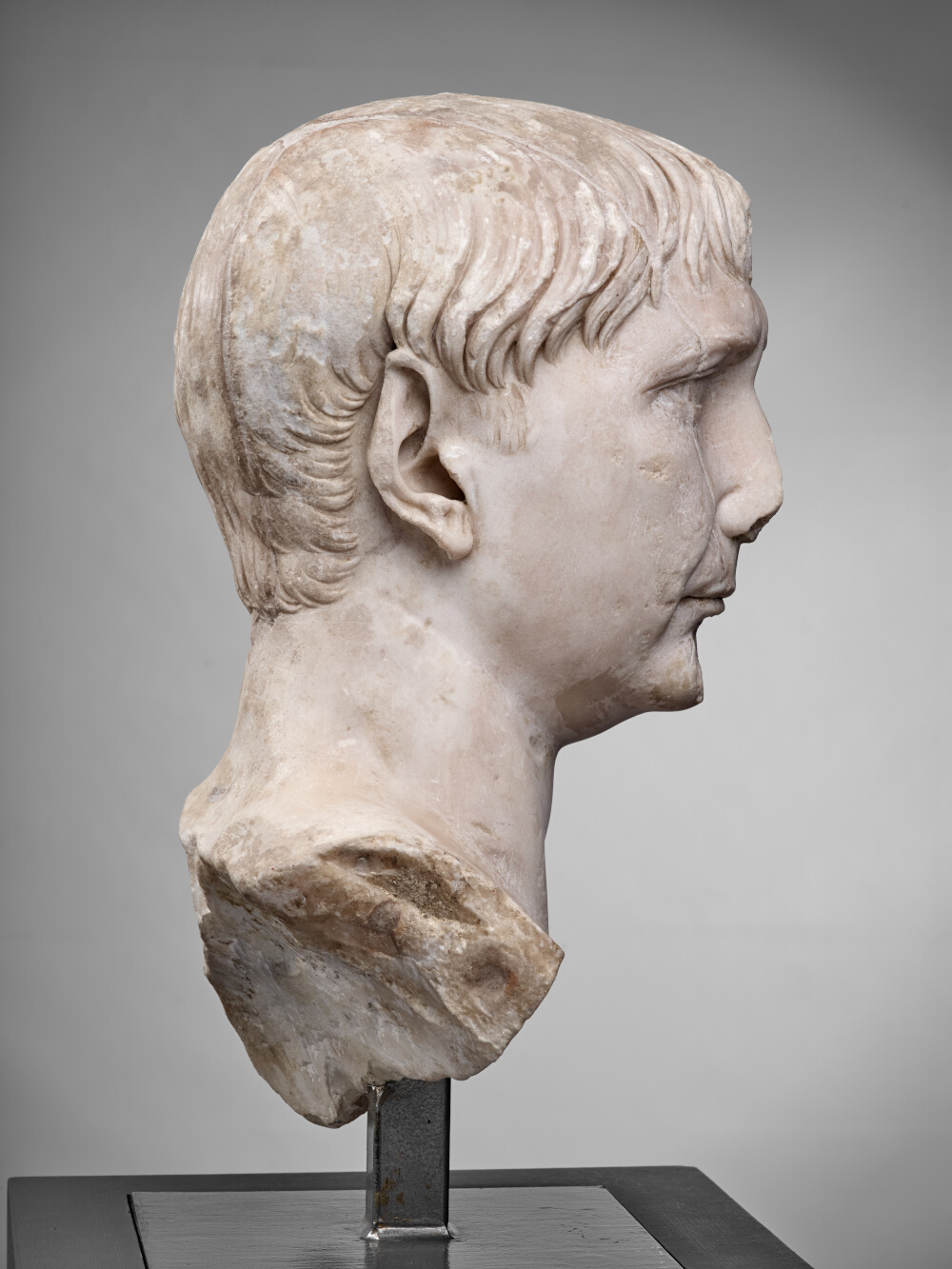
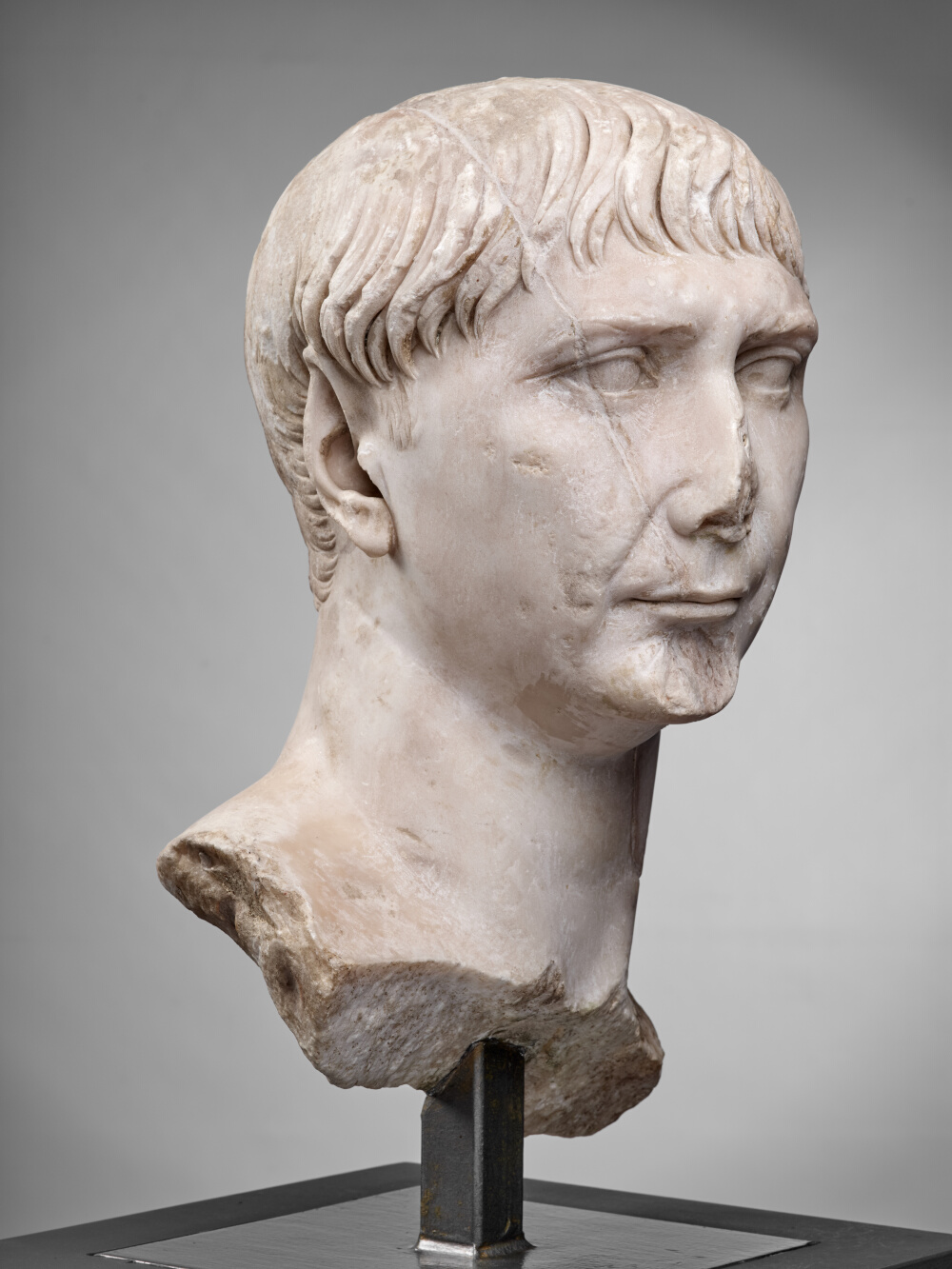
- Biographic data
- 53 - 117
Emperor from AD 98 to 117 - Date de création
- Approximately AD 108
- Type
- Known as "of the Decennalia" type
- Material
- Göktepe marble, district 3 (Turkey)
- Dimensions
- H. 41 x l. 26,5 x P. 24 (cm)
- Inventory number
- Ra 58 b
- Photo credits
- Daniel Martin
After the assassination of Emperor Domitian on the 18th September 96, and hence the end of the Flavian dynasty, the reign of Nerva (96-98) represented a short but necessary transition in the history of the Principate. His reign brought about the Antonine dynasty, named after Antoninus Pius, who, more than any other emperor, symbolised the stability of the Empire. The new imperial house opted for a system based on selecting the best candidate rather than simply favouring blood ties. Unfortunately, Marcus Aurelius, the penultimate representative of this artificial lineage, later chose to go back to the old ways. After Nerva, power was concentrated in the hands of six emperors: Trajan, Hadrian, Antoninus Pius, Marcus Aurelius (associated for a time with Lucius Verus) and Commodus.
Trajan came from a family of Italian settlers who moved to the province of Hispania Baetica (current Andalusia) in Italica (modern-day Santiponce, in the province of Seville). Having been adopted by Nerva, he married Pompeia Plotina, whose family was from Nîmes. The changes to his image, as depicted on sculptures, were dictated by the major events that occurred during his reign. Four types of portraits are recognised today, often differentiated only by the different arrangement of stands of hair.
This copy is the work of one of the best workshops in Rome, as evidenced by the lifelike strands on the forehead and around the temples, and the sensitively modelled auricles and earlobes. The large pitted area at the base of the neck indicates that this bust was originally clothed in a paludamentum (the military cloak of generals and emperors). The head, vigorously turned to the right, is proof of the emperor’s energy and moral strength.
The series to which this portrait belongs shows, for the first time, the beginning of the arms, very clearly marked by an incision or a slight depression that distinguishes them from the general shape of the torso. This decisive step towards creating a more natural depiction has been furthered by accentuating the chest muscles. This very unusual iconographic type is portrayed on the reliefs of Trajan’s Column in Rome and must therefore predate 113. It has long been linked to the celebration of the decennalia (ten years of reign) in 108. Some, however, have chosen to link its creation to the second triumph over Dacia in 107.
According to J.-C. Balty 2012, Les portraits romains, 1 : Le siècle des Antonins, 1.2 (Sculptures antiques de Chiragan (Martres-Tolosane), Toulouse, p. 92-101.
Bibliography
- Balty 1977 J.-C. Balty, « Un nouveau portrait de Trajan, » Les cahiers de Mariemont. Bulletin du Musée royal de Mariemont, 8, pp. 45–62. no 109 p. 60
- Balty, Cazes, Rosso 2012 J.-C. Balty, D. Cazes, E. Rosso, Les portraits romains, 1 : Le siècle des Antonins, 1.2 (Sculptures antiques de Chiragan (Martres-Tolosane), Toulouse. p. 22-23, fig.10-11, p. 92-98, 100-101, fig. 12-13, 15-16, 19-21, 24-26, p. 260, fig. 191
- Braemer 1952 F. Braemer, « Les portraits antiques trouvés à Martres-Tolosane, » Bulletin de la Société Nationale des Antiquaires de France, pp. 143–148. p. 143-148
- Du Mège 1835 A. Du Mège, Description du musée des Antiques de Toulouse, Toulouse. p. 111, no 195
- Du Mège 1844 A. Du Mège, Description du musée des Antiques de Toulouse (document manuscrit ). no 359-361
- Du Mège 1828 A. Du Mège, Notice des monumens antiques et des objets de sculpture moderne conservés dans le musée de Toulouse, Toulouse. p. 63, no 122
- Espérandieu 1908 É. Espérandieu, Recueil général des bas-reliefs de la Gaule romaine, 2. Aquitaine, Paris. p. 64-65, no 958
- Joulin 1901 L. Joulin, Les établissements gallo-romains de la plaine de Martres-Tolosane, Paris. p. 115 et pl. XVII, no 262 b
- Massendari 2006 J. Massendari, La Haute-Garonne : hormis le Comminges et Toulouse 31/1 (Carte archéologique de la Gaule), Paris. p. 243, fig. 103
- Rachou 1912 H. Rachou, Catalogue des collections de sculpture et d’épigraphie du musée de Toulouse, Toulouse. p. 42, no 58 b
- Roschach 1892 E. Roschach, Catalogue des musées archéologiques de la ville de Toulouse : Musée des Augustins, Musée Saint-Raymond, Toulouse. p. 32, no 58 b
- Roschach 1865 E. Roschach, Catalogue des antiquités et des objets d’art, Toulouse. no 58 b
- Rosso 2006 E. Rosso, L’image de l’empereur en Gaule romaine : portraits et inscriptions (Archéologie et histoire de l’art), Paris. p. 451-453, no 215
- Centre culturel Abbaye de Daoulas 1993 Centre culturel Abbaye de Daoulas, Rome face aux Barbares : 1000 ans pour un empire. Exhibition, Abbaye de Daoulas, 19 June - 26 September 1993, Daoulas. no 36.01
- Musée Saint-Raymond 1990 Musée Saint-Raymond, Le cirque romain. Exhibition, Musée Saint-Raymond, Toulouse, 1990, Toulouse. no 11
- Musée Saint-Raymond 2011 Musée Saint-Raymond, L’image et le pouvoir : le siècle des Antonins. Exhibition, Musée Saint-Raymond, Toulouse, 19 November 2011 - 18 March 2012, Toulouse. p. 20
- Musées départementaux de Loire-Atlantique 1987 Musées départementaux de Loire-Atlantique, Le trésor de Garonne : IIe siècle après Jésus-Christ : des monnaies dans la "grave" : Musée monétaire, Paris ; Musée d’histoire de Marseille ; Musée d’archéologie-Musée Thomas Dobrée, Nantes…, Nantes. p. 75, no 94
To cite this notice
Capus P., "Bust of Trajan", in The sculptures of the roman villa of Chiragan, Toulouse, 2019, online <https://villachiragan.saintraymond.toulouse.fr/en/ark:/87276/a_ra_58_b>.